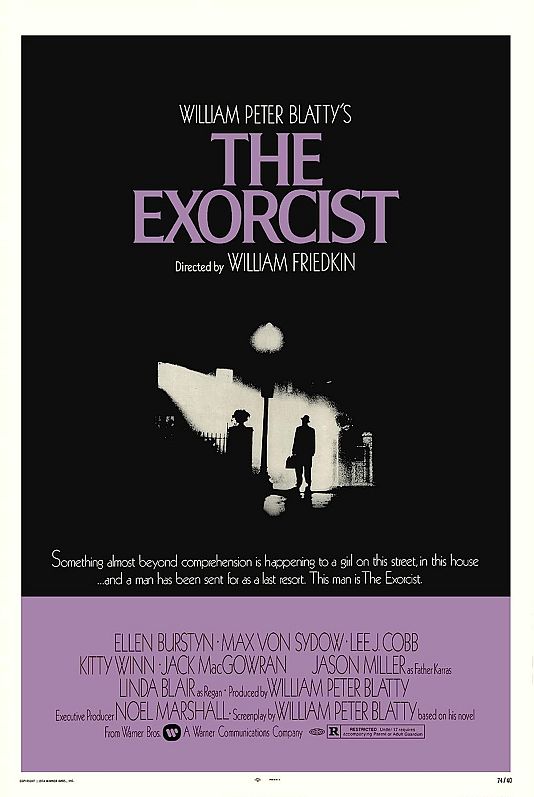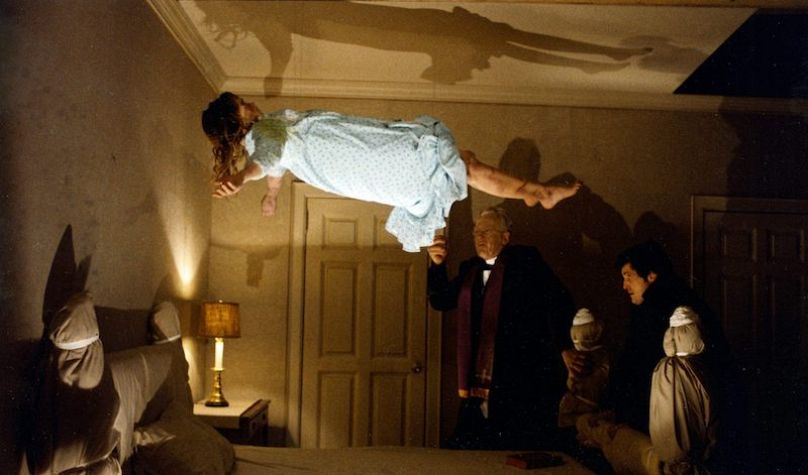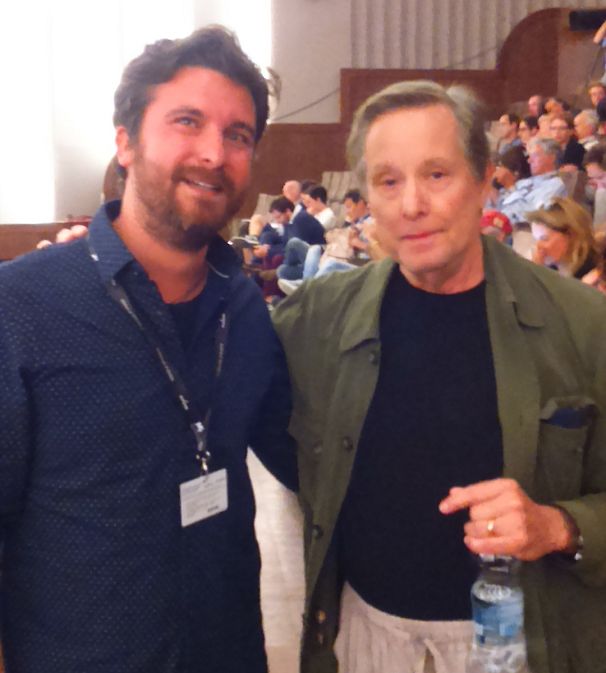Why I'll miss the director of 'The Exorcist'.
On Monday nights, I co-host a pub quiz.
I leave on time from work, as opposed to pulling the ridiculous overtime I’ve become accustomed to, and usually clock off every week with a clear head. You see, we have an on-running and rather dark joke that the celebrity deaths tend to be announced on a Friday evening, just before the weekend starts. It’s the Friday night curse.
However, it was the beginning of the week, so no need to worry.
How wrong I was.
As I start sipping my drink at the pub before getting into host mode, the news arrives: William Friedkin has died aged 87.
Sweet Pazuzu, that hurt.
The influential filmmaker behind the Oscar-winning The French Connection, and iconic films like Sorcerer and Cruising was part of the New Hollywood movement in the 1970s and a true maverick if there ever was one.
But above all, he was the director of The Exorcist.
I started silently cursing the Euronews journalist who was going to end up writing his obituary, as that gig should be rightly mine. The Exorcist is one of my favourite films of all time, if not the one at the top spot. It’s the film I credit with kickstarting my lifelong appreciation (read: obsession) with the horror genre. Ever since I first saw it when I was 11 years old, clutching a cushion as if my life depended on it and in giddy disbelief that I was pulling one on my parents by watching a film I was clearly too young to see at the time (little did they know that the VHS of A Clockwork Orange has fallen into my eager hands a few weeks prior), I’ve been hooked. It has stayed with me to this day, burrowed under my skin and stands as a film I can watch and rewatch countless times and emerge with a fresh appreciation.
I saw it for the second time at the age of 14, this time at the cinema. They were releasing the uncut version for the 25th anniversary, and nothing was going to stop me. I skipped school for a few hours that day to catch it with my friend Simon, who had never seen it before. It was the first time I was skiving, something I kept hidden from my mum for many years.
I vividly remember seeing the poster before entering the cinema (which had a pretty lax policy on age restrictions) and there was current coursing through my veins, an illicit sort of excitement that somehow decried from the central image of that eerie light shining through the window of the young Regan MacNeil’s room.
To this day, it remains one of the times I’ve been the most feverishly animated to go to the cinema.
I was entranced. The experience was enhanced not only by a bigger image and better sound, but because I was living it vicariously through Simon’s terrified screams and jolts. Once the end credits rolled, I sat there, unable to move.
This was pure movie magic.
When people ask me what my favourite film is, I’m in there like a shot, and I usually get some odd looks – mostly because the film has been culturally enshrined as the one with the demon-possessed 360° head spinning and green vomit. But it’s so much more than that. In setting the fantastical demonic possession of a young girl within the confines of a somewhat mundane and safe American life, Friedkin told a tale about the age old battle between good and evil, the story of challenged faith, of grief, and of a mother battling for the soul of her child.
The greatest film of all time? Certainly the greatest horror film of all time in my mind, one which taught me how life-affirming genre is, and how being scared witless isn’t something just for the gore hounds. It's a positive and cathartic experience that can have a uniquely uplifting effect.
If someone were to watch The Exorcist for the first time, I’d bet that they’d be surprised by its unconventional approach to horror, how intimate it is and how it goes far, far beyond graphic language and pea-soup projectile vomiting. It’s a masterclass in acting and filmmaking, with everyone at the very top of their games. It features some of the most unsettling set pieces, camera tricks and sound effects. And yes, it is terrifying – but not always in the places you might expect.
I remain gobsmacked by the image of the young Regan levitating, with those terrifyingly effective practical effects still holding up to this day. I still shudder when the ‘subliminal’ flashes appear, revealing the face of demon of the southwestern wind Pazuzu. But best of all, none of the film’s scariest moments were used gratuitously by Friedkin. Rather than being shocking for the sake of it, every detail, every sound, every set piece is necessary to the story’s progression and impact.
The elements that haunt me the most are the priest Damien Karras battling his personal demons manifesting as guilt over the fate of his aging mother; the disarmingly gentle manner with which Lankester Merrin tells Regan’s mother Chris MacNiel what a beautiful name her daughter has prior to meeting the possessed child; and that scene in the subway, where a homeless man and former altar boy asks Father Karras whether he can spare some change. His lines are repeated later on in the film by Pazuzu, revealing that while Christianity would have us believe that the Lord’s all-loving eye is upon us at all times, so is the devil’s. His insidious omnipotence is ever-present, that as that scene rushes through my mind as I type these words, every hair on my body is standing to attention.
My obsession with The Exoricst keeps on growing and will continue to do so. It grew when I found out that it provoked mass public hysteria when it came out on 26 December 1973, leading me to read up on the Satanic Panic (I can’t recommend enough the terrific book 'Satanic Panic: Pop Cultural Paranoia in the 1980s' by Kier-La Janisse) and the history of movie censorship. The Catholic Church even tried to have the film banned and there was fearmongering aplenty about how nefarious the film was for children.
Even better. Bring it on.
And because the film celebrates its 50th anniversary this December, I can’t deny I’m heartbroken at the thought of not getting to interview William Friedkin for the second time.
I’ll always remember meeting him at the Venice Film Festival in 2017, and interviewing him that year. To this day, it’s probably the closest I’ve been to starstruck. He was such a generous interviewee, a kind man who didn’t mind that I was wearing an Exorcist t-shirt for the interview – a cringey detail I’d come to later curse as I must have appeared like a rabid fanboy. As the interview finished, he gave me a lovely handshake, thanked me for the chat, and pointed to my t-shirt and said: “Loving your work.”
That should have been my line.
You won't be surprised to read that as I was getting ready to go into work this morning, I dug out that very same t-shirt and wear it proudly today of all days.
I won’t meet William Friedkin again, but I’m so grateful I did.
His final film, The Caine Mutiny Court-Martial, is set to premiere at the upcoming Venice Film Festival, as is a 50 year anniversary copy of The Exorcist.
I’ll endeavour to be front row for both, silently thanking the late director for giving me so much over the years and for continuing to generate admiration not only a genre of cinema, but a craft that continues to be the closest thing to magic there is.
Pazuzu’s aim may have been to “make us despair.” William Friedkin did the polar opposite.
Thank you, maestro.














